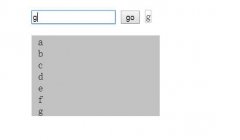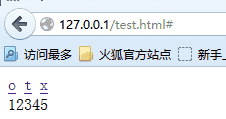其所有源码实现及注释为:
jQuery.Callbacks = function( options ) { options = typeof options === "string" ? // 将字符串中空格分割的子串,转换为值全为true的对象属性 createOptions( options ) : jQuery.extend( {}, options ); var // Flag to know if list is currently firing firing, // Last fire value for non-forgettable lists memory, // Flag to know if list was already fired fired, // Flag to prevent firing locked, // Actual callback list list = [], // Queue of execution data for repeatable lists queue = [], // Index of currently firing callback (modified by add/remove as needed) firingIndex = -1, // Fire callbacks fire = function() { // Enforce single-firing locked = locked || options.once; // Execute callbacks for all pending executions, // respecting firingIndex overrides and runtime changes fired = firing = true; // 为quene队列中不同的[context, args]执行list回调列表,执行过程中会判断stopOnFalse中间中断 for ( ; queue.length; firingIndex = -1 ) { memory = queue.shift(); while ( ++firingIndex < list.length ) { // Run callback and check for early termination if ( list[ firingIndex ].apply( memory[ 0 ], memory[ 1 ] ) === false && options.stopOnFalse ) { // Jump to end and forget the data so .add doesn't re-fire firingIndex = list.length; memory = false; } } } // Forget the data if we're done with it if ( !options.memory ) { memory = false; } firing = false; // Clean up if we're done firing for good // 如果不再执行了,就将保存回调的list清空,对内存更好 if ( locked ) { // Keep an empty list if we have data for future add calls if ( memory ) { list = []; // Otherwise, this object is spent } else { list = ""; } } }, // Actual Callbacks object self = { // Add a callback or a collection of callbacks to the list add: function() { if ( list ) { // If we have memory from a past run, we should fire after adding // 如果我们选择缓存执行环境,会在新添加回调时执行一次保存的环境 if ( memory && !firing ) { firingIndex = list.length - 1; queue.push( memory ); } ( function add( args ) { jQuery.each( args, function( _, arg ) { // 如果是函数,则判断是否去重,如果为类数组,则递归执行该内部函数 if ( jQuery.isFunction( arg ) ) { if ( !options.unique || !self.has( arg ) ) { list.push( arg ); } } else if ( arg && arg.length && jQuery.type( arg ) !== "string" ) { // Inspect recursively add( arg ); } } ); } )( arguments ); if ( memory && !firing ) { fire(); } } return this; }, // Remove a callback from the list // 移除所有的相同回调,并同步将firingIndex-1 remove: function() { jQuery.each( arguments, function( _, arg ) { var index; while ( ( index = jQuery.inArray( arg, list, index ) ) > -1 ) { list.splice( index, 1 ); // Handle firing indexes if ( index <= firingIndex ) { firingIndex--; } } } ); return this; }, // Check if a given callback is in the list. // If no argument is given, return whether or not list has callbacks attached. // 检查是否存在该函数,如果不传递参数,则返回是否有回调函数 has: function( fn ) { return fn ? jQuery.inArray( fn, list ) > -1 : list.length > 0; }, // Remove all callbacks from the list empty: function() { if ( list ) { list = []; } return this; }, // Disable .fire and .add // Abort any current/pending executions // Clear all callbacks and values // 置locked为[],即!![] === true,同时将队列和列表都清空,即禁用了该回调集合 disable: function() { locked = queue = []; list = memory = ""; return this; }, disabled: function() { return !list; }, // Disable .fire // Also disable .add unless we have memory (since it would have no effect) // Abort any pending executions // 不允许执行,但如果有缓存,则我们允许添加后在缓存的环境下执行新添加的回调 lock: function() { locked = queue = []; if ( !memory && !firing ) { list = memory = ""; } return this; }, locked: function() { return !!locked; }, // Call all callbacks with the given context and arguments // 为fire附带了一个上下文来调用fire函数, fireWith: function( context, args ) { if ( !locked ) { args = args || []; args = [ context, args.slice ? args.slice() : args ]; queue.push( args ); if ( !firing ) { fire(); } } return this; }, // Call all the callbacks with the given arguments fire: function() { self.fireWith( this, arguments ); return this; }, // To know if the callbacks have already been called at least once fired: function() { return !!fired; } }; return self; };jQuery.Deferred对象jQuery.Deferred对象是一个工厂函数,返回一个用于异步或同步调用的deferred对象,支持链式调用、回调函数队列,并且能针对返回的状态不同执行不同的回调。它类似于ES6提供的Promise对象,提供9个主要的方法:
它的实现思想是创建一个对象,包含不同状态下回调函数的队列,并在状态为失败或成功后不允许再次改变。通过返回的Deferred对象进行手动调用resolve/reject/notify方法来控制流程。
 相关文章
相关文章


 精彩导读
精彩导读 热门资讯
热门资讯 关注我们
关注我们
